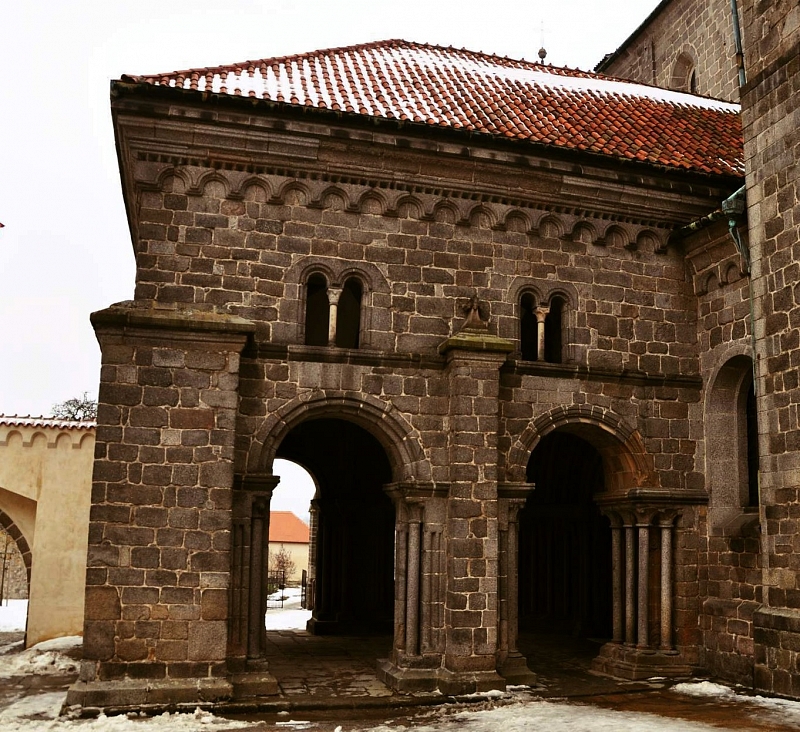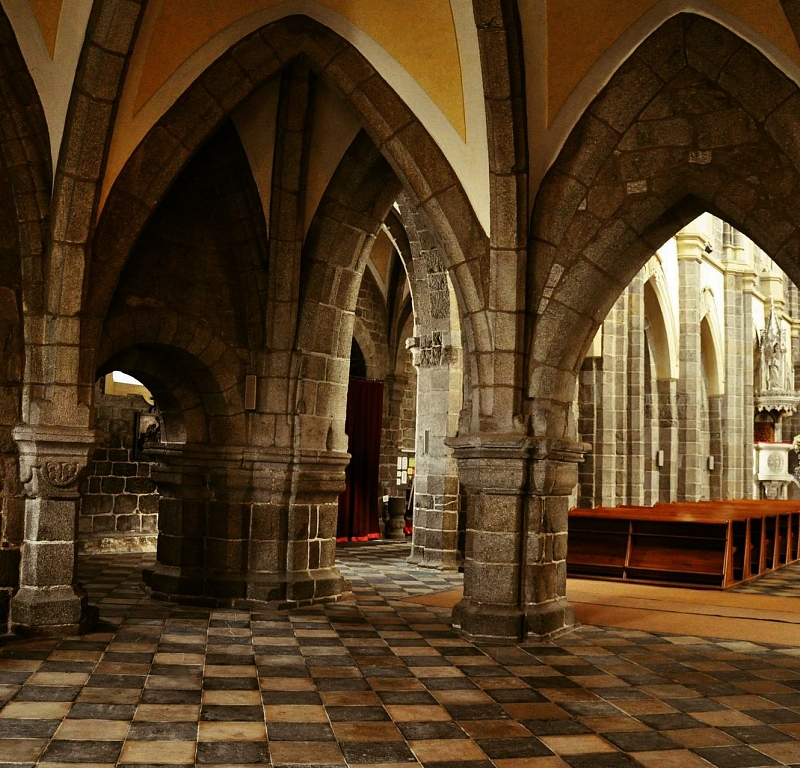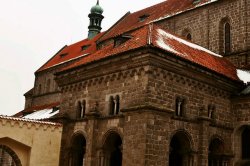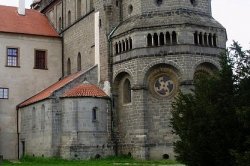Basilica of St. Prokop in Třebíč
At the time when one of the first Gothic cathedrals began to grow in France, and when buildings even more closely related to the ancient style were being built in Germany, the Basilica of St. Prokop in Třebíč, reflecting a number of different European influences. The floor plan of the basilica was inspired by South German buildings, the portal looked up again in the portal of the cathedral in Vienna, and the decoration was imprinted by Normans. The vault has found a pattern in southern French building practices and the central window of the main apse is similar to the rosette in Chartres. Not only thanks to this unique interweaving of European influences and architectural style at the range of Romanesque and Gothic style, the Basilica of St. Prokop in Třebíč was inscribed on the UNESCO World Heritage List in 2003.
Information for visitors
Interesting facts Basilica of St. Prokop in Třebíč
Around 1220, Třebíč and its monastery were clearly a center of power and culture, and so the idea of building the largest Moravian church on the site of a former wooden chapel came from the head of the then local abbot. His intention was not achieved literally - it is "only" the longest church in Moravia.
The foundations, the northern and southern chapels, the choir, the crypt and the vestibule are the work of the southern French smelter. From 1241, when the construction of the basilica was interrupted, it began to develop more in the Gothic style. The vistas from the main nave are still Romanesque, while the windows are more elongated. The sculptures, located in the columns in the main apse, also have something of a Gothic sculptural style, and yet they retain some of the Romanesque rigidity.
The building was completed in 1260 and served its purpose for the next two centuries, until 1462, when it was burned down. The Třebíč monastery gradually declined and at the beginning of the 15th century the last monks left here and the church began to be used for secular purposes. A brewery, a stable, a laundry room and a chateau kitchen were established here.
The glory of the Třebíč basilica was restored in the 17th century by the Wallensteins, who called in the architect Maximilian Kaňka, who worked out a Baroque Gothic vault of a specific appearance. From that time until today, the basilica has served its original purpose.
The second oldest frescoes in the territory of Moravia have been preserved in the local abbey chapel, covering its entire space. In the past, these paintings adorned the entire basilica, but unfortunately they have not been preserved to this day.
The best-preserved part of the basilica is the crypt, which serves as a burial ground for the founders of the monastery and local monks. The space has its own specific charm thanks to fifty columns supporting the ceiling, which are decorated with heads with plant ornaments, faces of people and animals. Each column is unique and original.
At present, the Basilica of St. Prokopa open to the public at a specified time.
Author: Andrea Štyndlová







